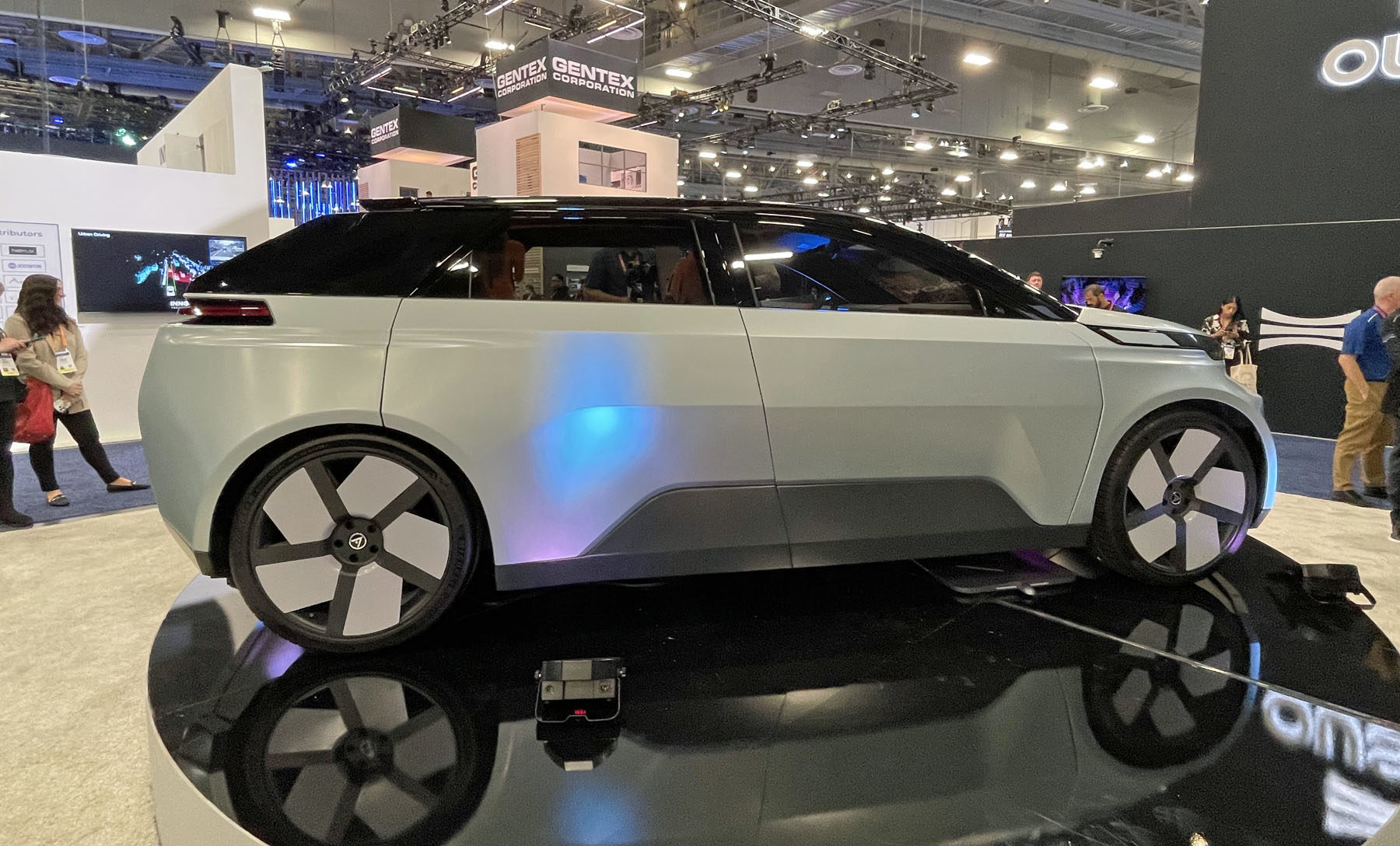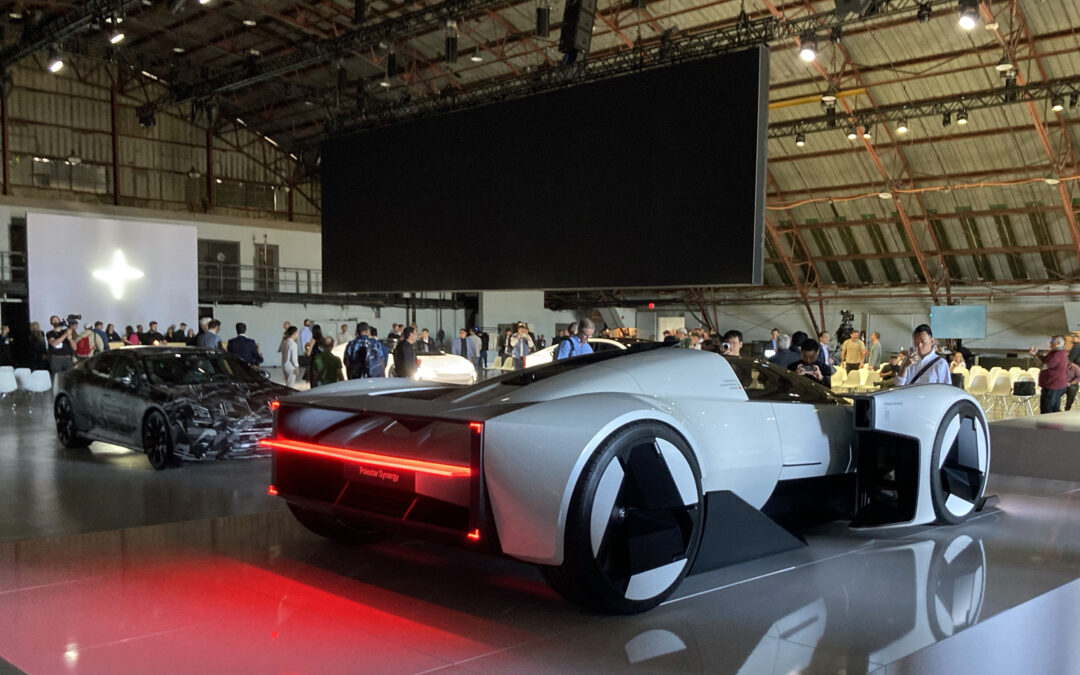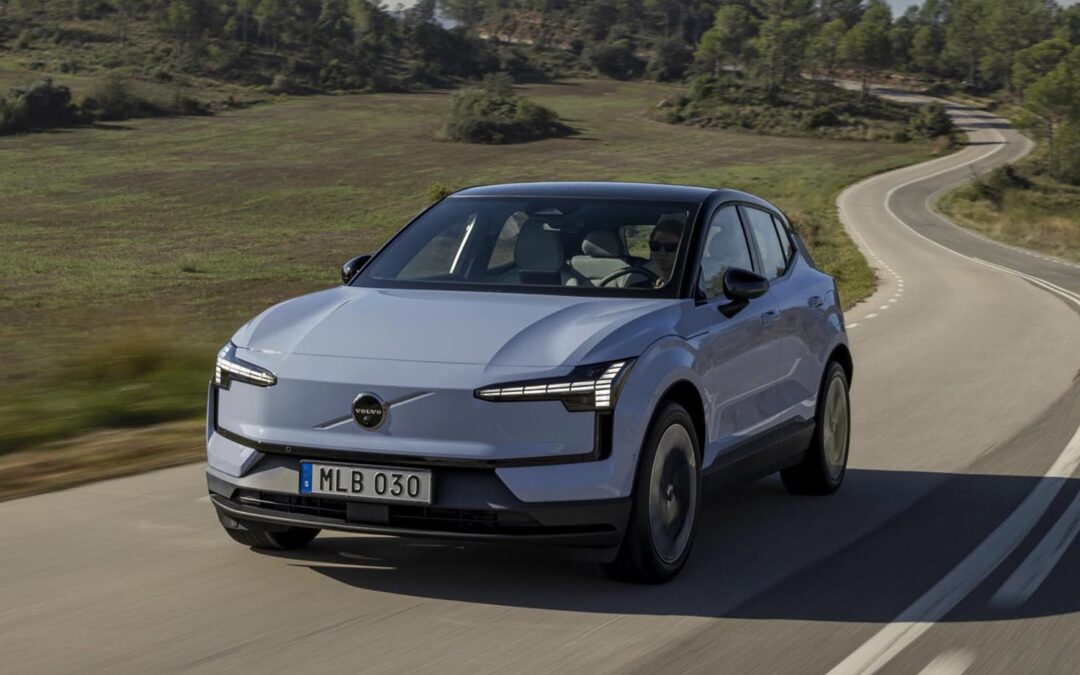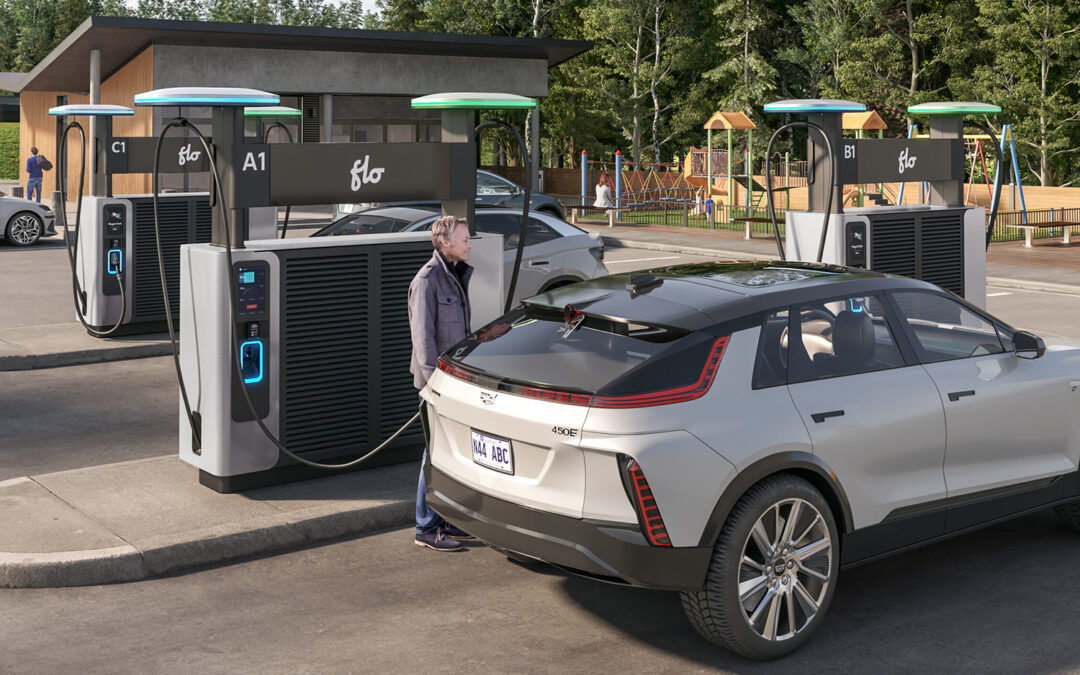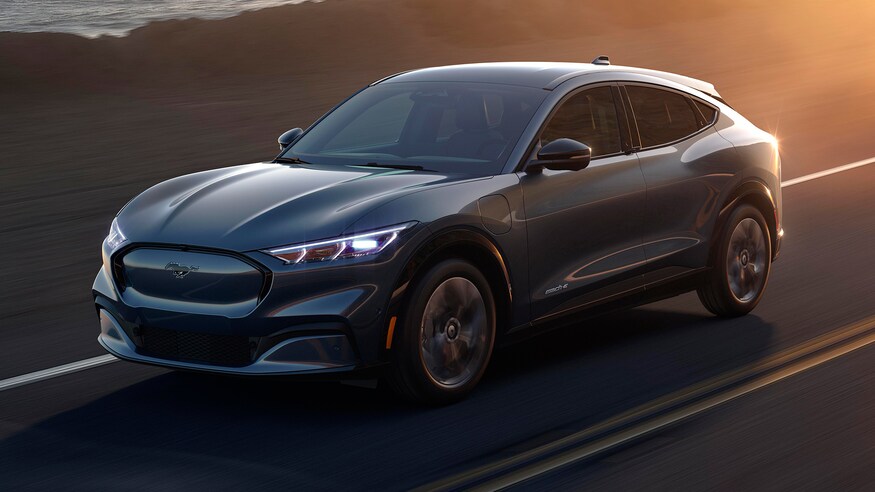CES is, first and foremost, a consumer electronics show that looks at the future of everything many take for granted, and the 2023 edition was no different. From wafer-thin 8K TVs to a treadmill that uses the pedal power to recharge a laptop, it was all on display.
However, of late, CES has also become one of the hottest, albeit unofficial, auto shows in North America, if not the world. At this year’s show, there was more automotive hoopla and excitement than there was at last year’s LA Auto Show, which speaks volumes. While many of the reveals were long on hype and short on substance there were some very intriguing peeks at vehicles that will be shown in a more formal manner over the coming year.
Project Arrow
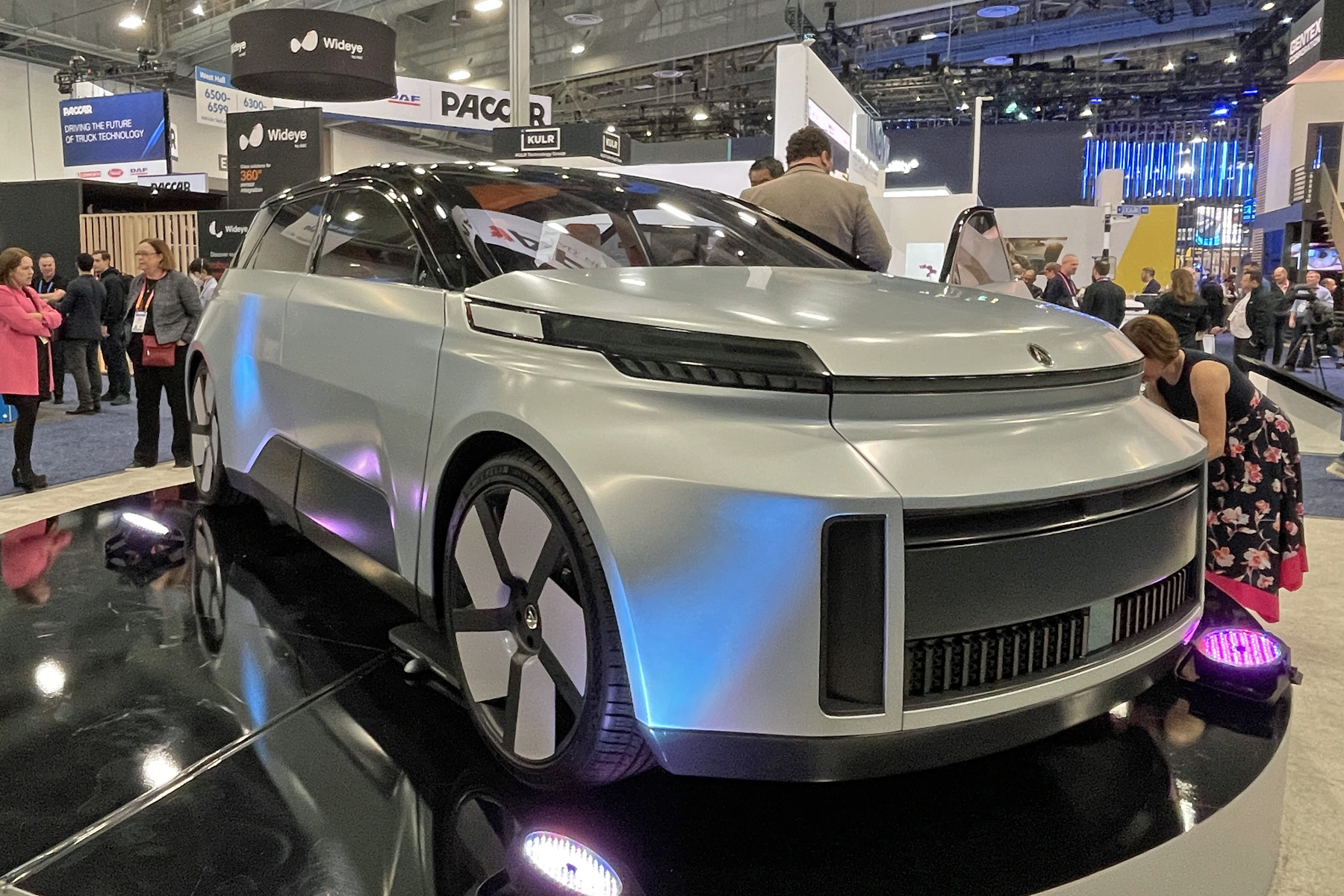
Project Arrow at 2023 CES / Graeme Fletcher, The Charge
One vehicle causing a seriously big stir was Project Arrow. It’s a concept car from the Automotive Parts Manufacturers’ Association (APMA) of Canada. In the past, the association had used Toyota and Lexus vehicles to showcase the advanced technologies developed by its members. The short story is the association was dared to build its own car to demonstrate the vast capability of its members, so that’s exactly what APMA did, and in just three short years. The project’s name did not come by coincidence. Back in the day, the APMA also represented aviation companies and so Project Arrow pays homage to the Avro CF-105 Arrow that was built in the 1950s.
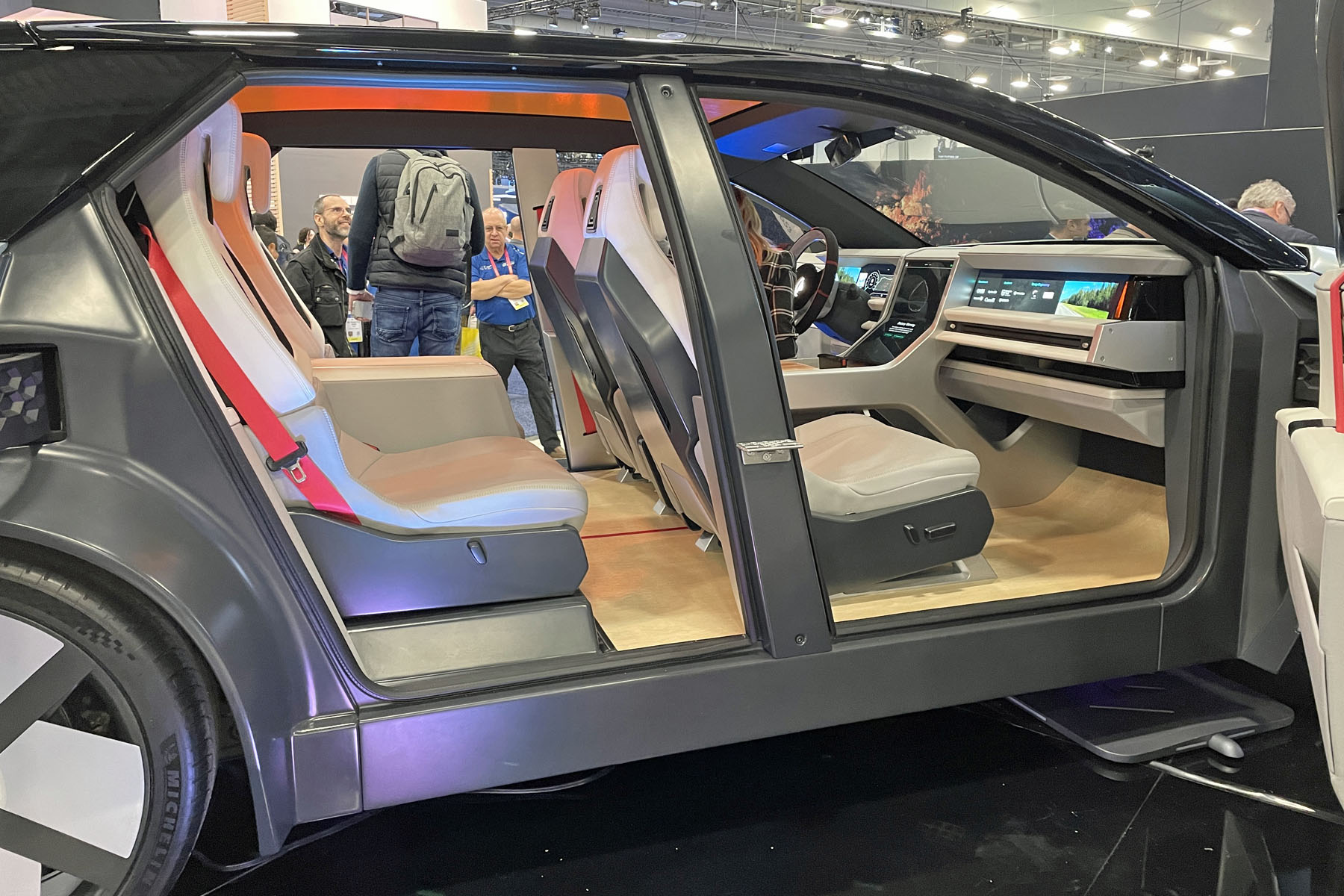
Project Arrow at 2023 CES / Graeme Fletcher, The Charge
In all, 58 members of the APMA put their collective heads together and came up with the finished concept. Their input covers everything from the chassis, bodywork, drivetrain and battery to the seats, wheels and all the software needed to run it, to deliver a connected drive and the advanced cybersecurity needed to protect the data. The only non-Canadian items are the screens for the instrumentation and multimedia.
The Arrow’s format uses front-hinged doors and suicide-hinged rear doors, which deletes the B-pillar and gives easy access to a state-of-the-art cabin. Here, the Arrow is packed with innovation and backed by talented know-how. A full interview with Flavio Volpe, President of the APMA, is coming to thecharge.ca.
Ram Revolution concept
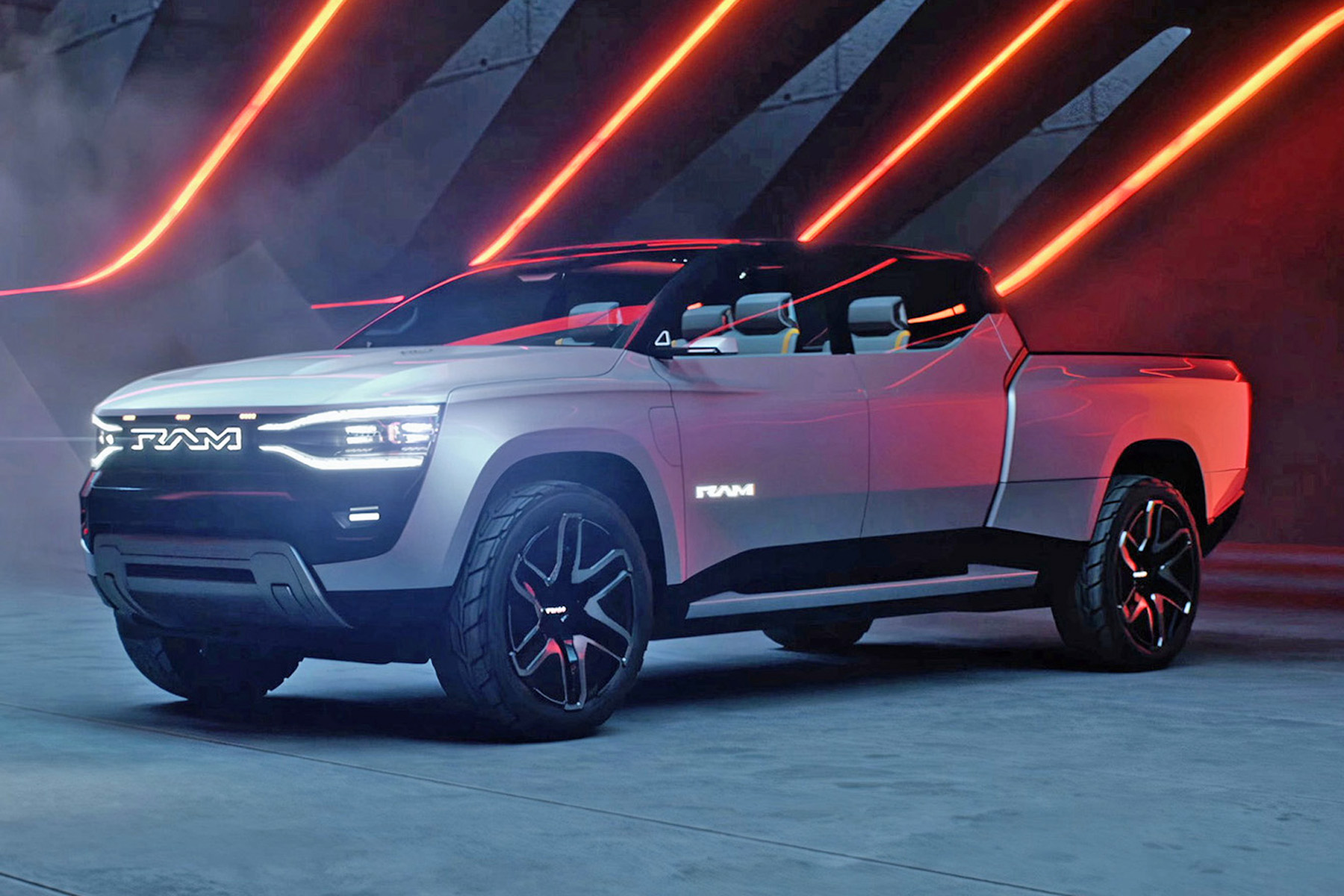
Ram 1500 Revolution Battery-electric Vehicle (BEV) Concept front 3/4
Ram took centre stage with the first look at the its 1500 Revolution concept. This all-electric pickup sure has the wherewithal to rock. The stunning new design speaks to the future of Ram trucks, featuring illuminated “R-A-M” badging that’s flanked by LED lights both front and back. Beneath the brightwork, the Revolution rides on a new “STLA” body-on-frame architecture that was designed for full-size electric vehicles. Interestingly, the wording in the press release implies this platform will likely find its way under other vehicles in the Stellantis fleet moving forward.
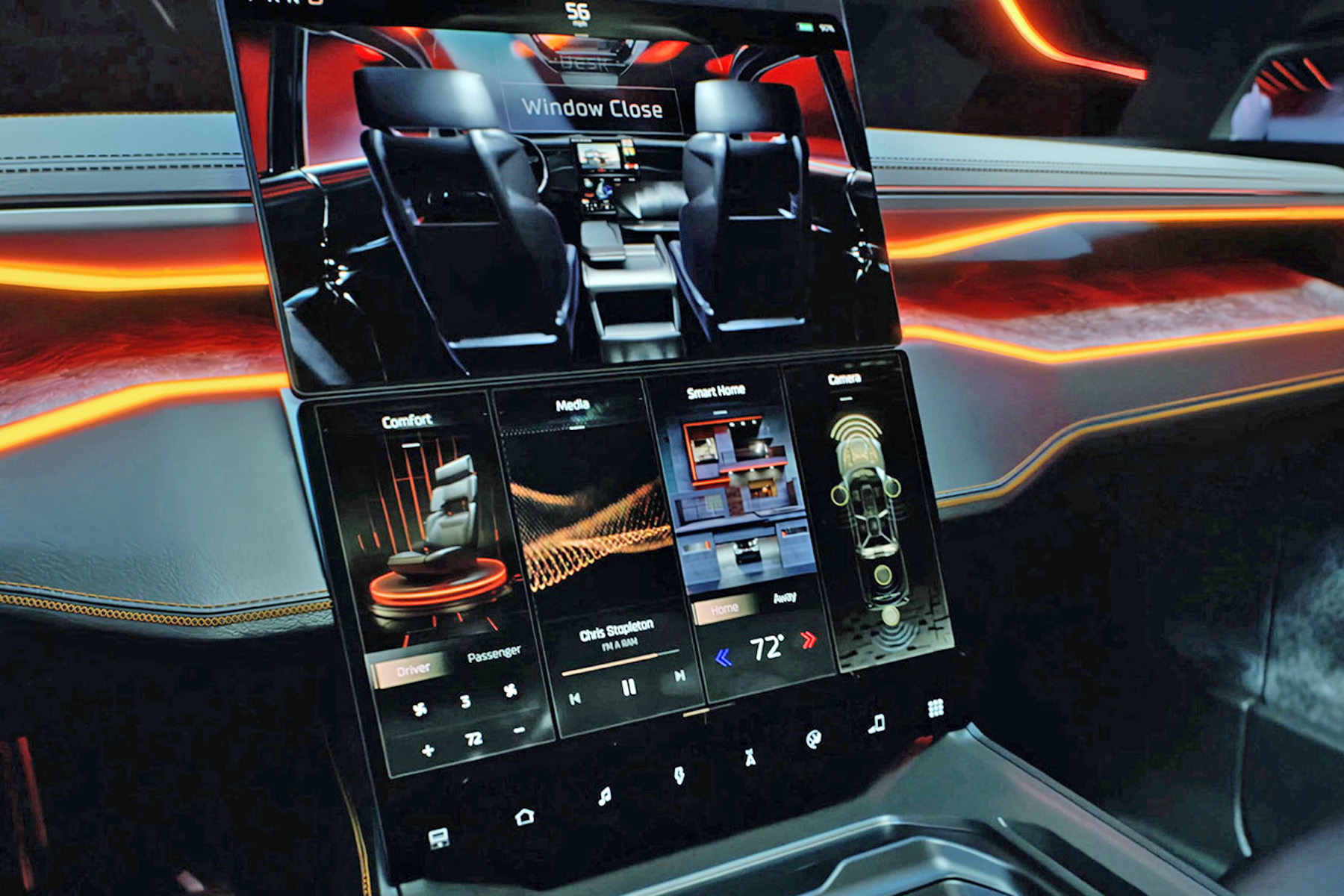
Ram 1500 Revolution
The chassis design incorporates the battery between the frame rails where it is protected. Ram did not mention size, but did crow about the fact the battery accepts 160 km of range in 10 minutes thanks to its 800-volt architecture and the ability to use a 350-kW DC fast charger. The battery drives two electric motors, which promises plenty of power and all-wheel-drive. It also features a four-wheel steering setup that allows the rear wheels to turn up to 15 degrees. This will give it a very tight turning circle. The concept also featured a load-levelling suspension and monster 24-inch wheels.
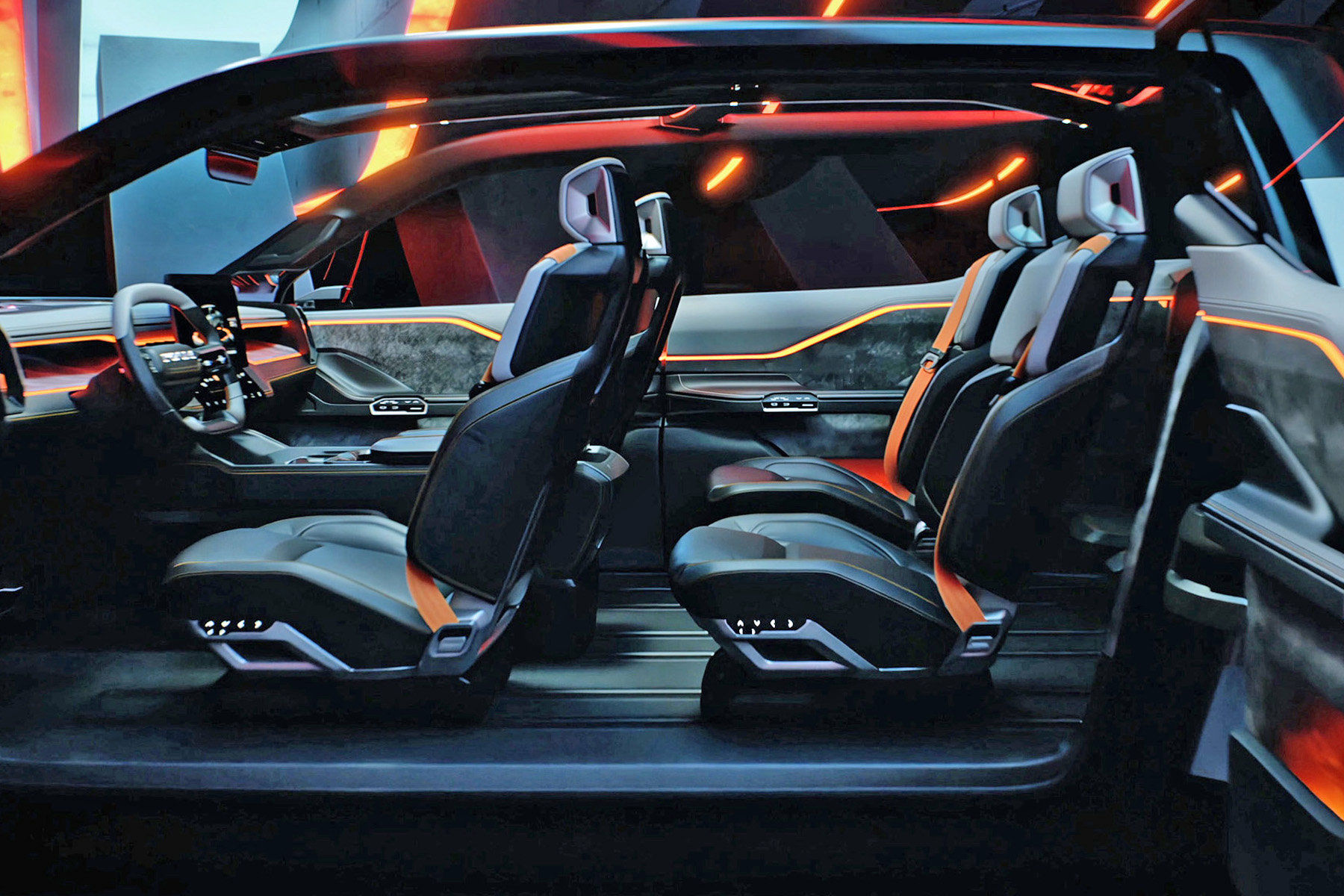
Ram 1500 Revolution
The interior is just as different. The B-pillar-less design gives unfettered access to the cabin and the “one space environment.” The concept uses the uninterrupted area to deliver multiple interior configurations including a third row jump seat option. Of course, it is packed with a monster multimedia screen and head-up display. The look is very cool in concept form; the production version will likely have to come a little closer to earth.
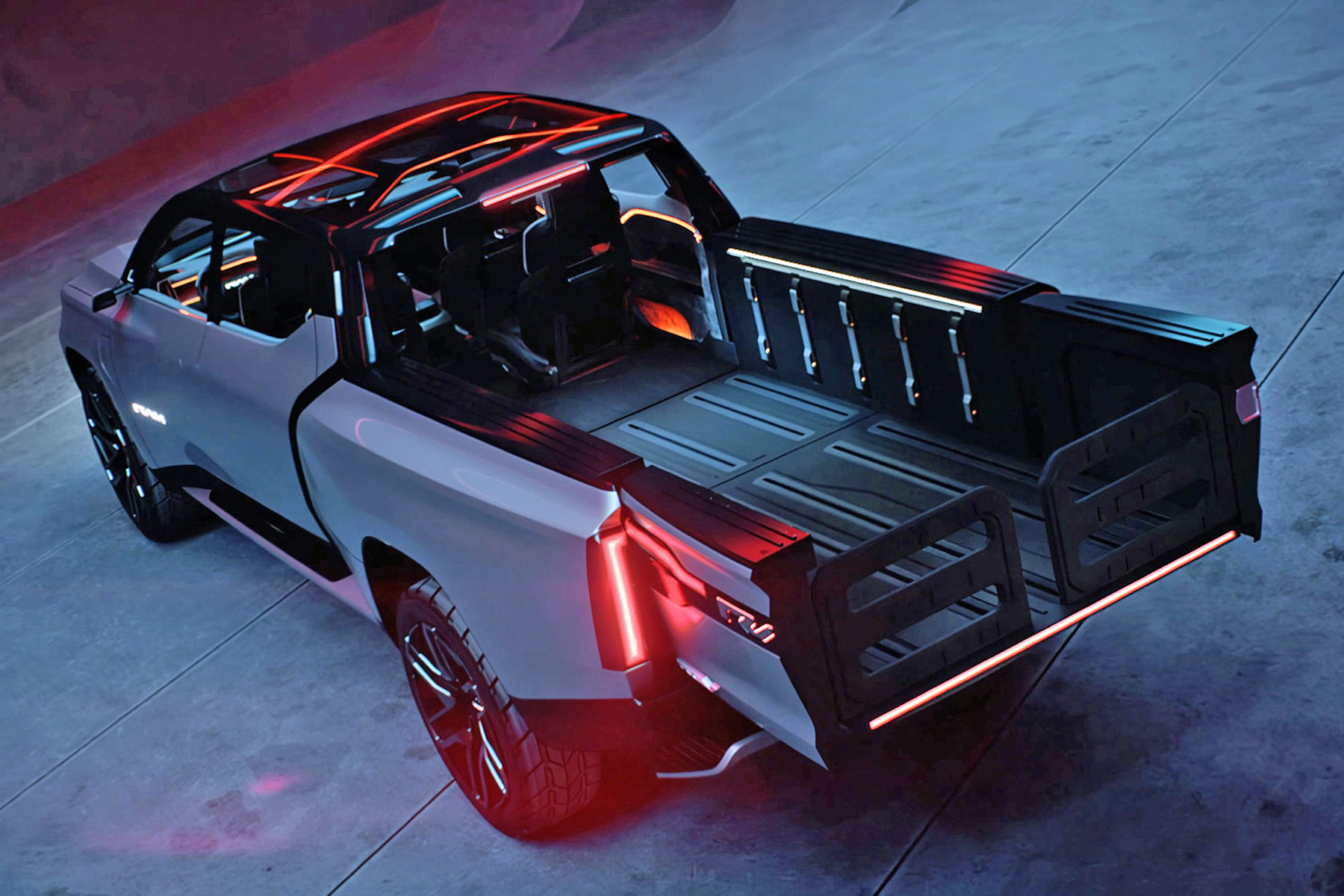
Ram 1500 Revolution Battery-electric Vehicle (BEV) Concept multifunction tailgate
Finally, there are two neat functions. First, the powered mid-gate complete powered rear window allows a pass-through that links the front trunk (frunk) to the rear box. This allows a 5,485-mm object to be carried inside the Revolution with the tailgate closed! The second innovation is Shadow Mode. This voice-activated feature uses sensor and camera technologies to navigate around obstacles while the truck follows the driver walking ahead. Now that would be a sight to see. Ram will launch the production 1500 BEV in 2024.
Vinfast VF 6 and VF 7
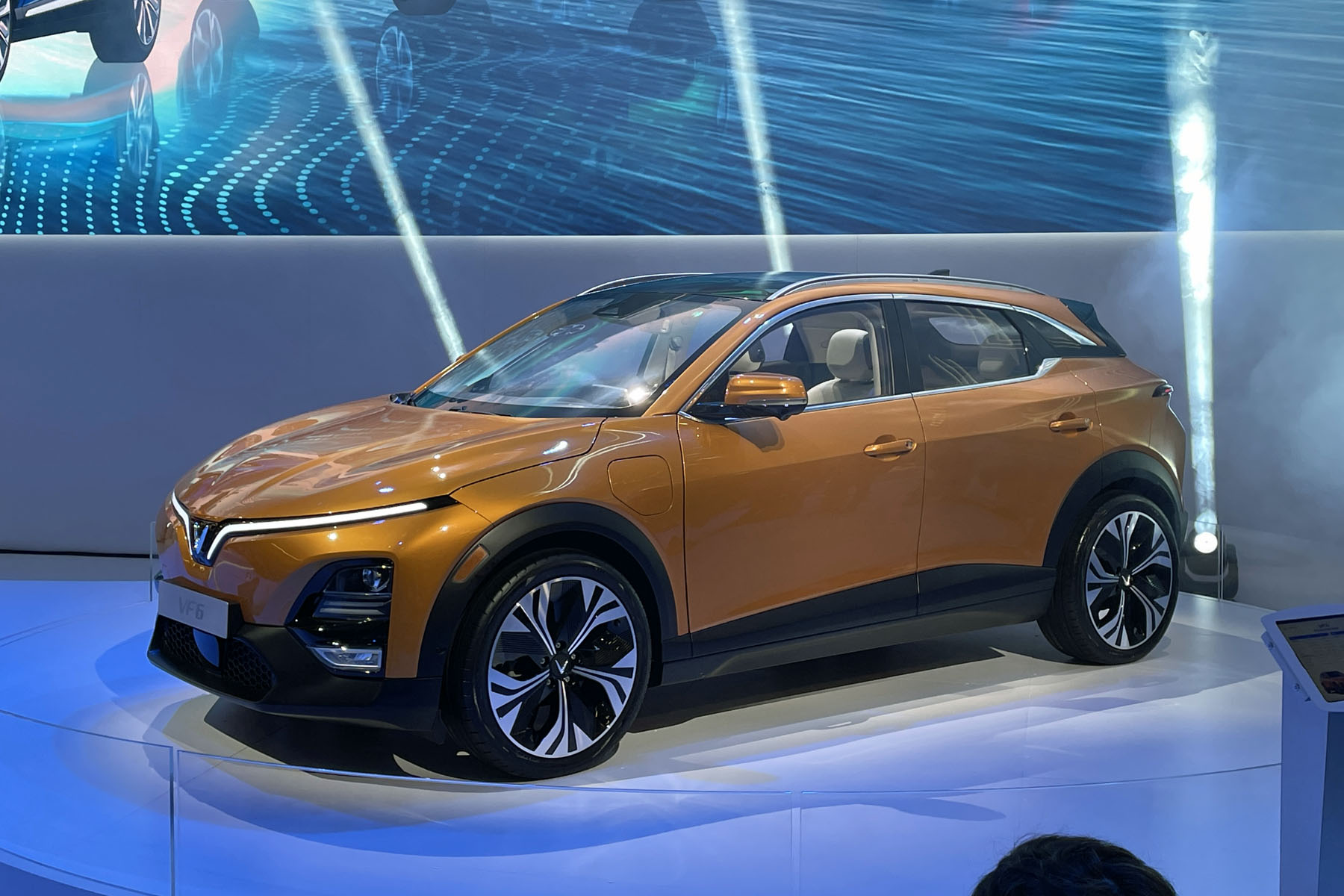
Vinfast VF 6 / Graeme Fletcher, The Charge
Following the launch of the VF 8 and three-row VF 9, VinFast will roll out the subcompact VF 6 and compact VF 7. The VF 6 features a 59.6-kilowatt-hour battery that drives a front-mounted electric motor. Based on WLTP (European) testing, it will deliver 399-kilomtres of range when working with the VF 6 Eco’s 174 horsepower motor. Move up to the VF 6 Plus, and the output rises to 201 hp and 228 lb-ft of torque, which is up from 184 lb-ft. Surprisingly, the penalty for the added performance boils down to just 18-km of range — it still delivers 381 km.
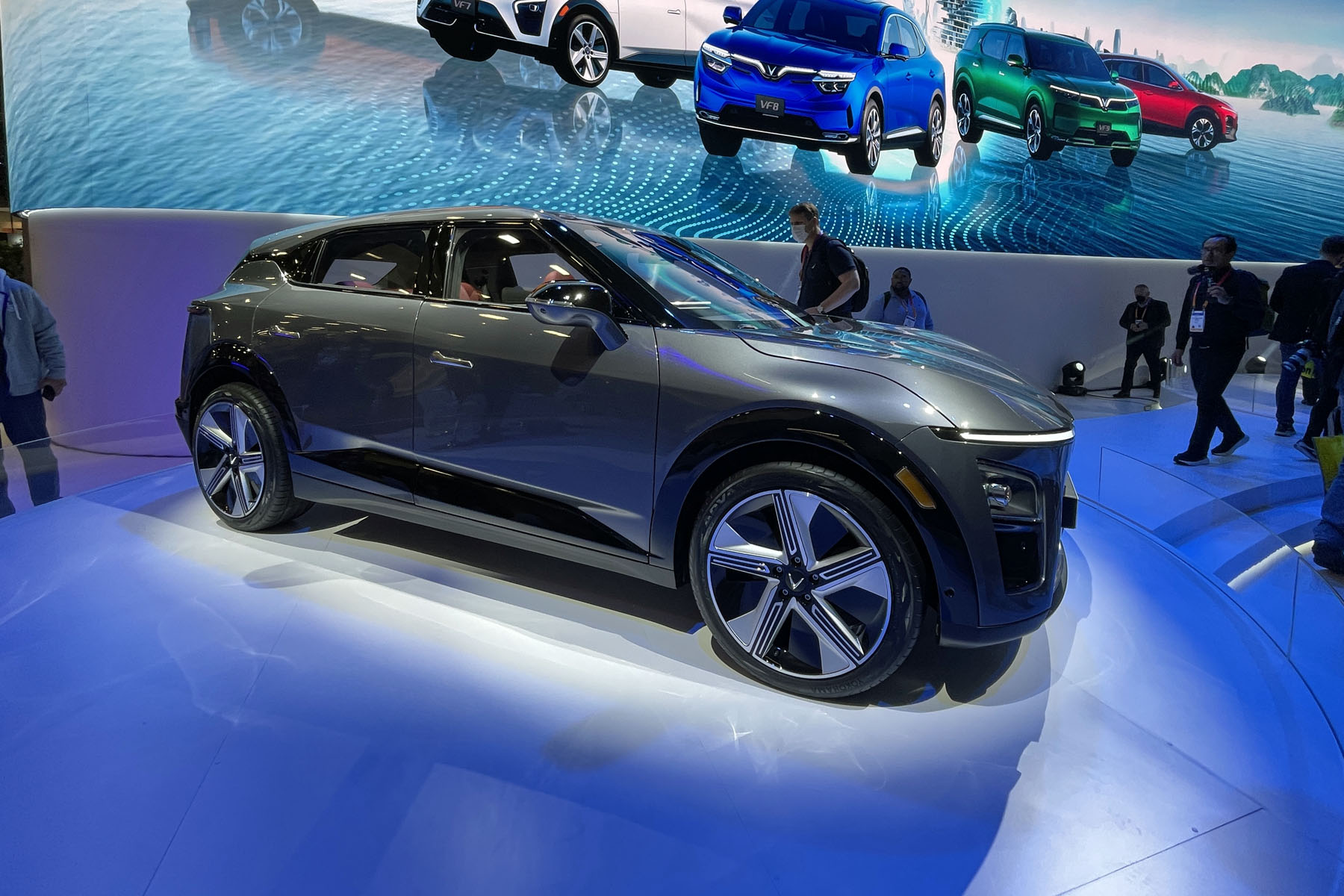
Vinfast VF 7 / Graeme Fletcher, The Charge
The VF 7 earns a larger 75.3-kWh battery. Again, there are two power choices. The VF 7 Eco drives the front wheels through a 201 hp electric motor that twists out 228 lb-ft of torque and delivers driving range of 450 km. The unit of choice will be the two motor VF 7 Plus. It brings all-wheel-drive and bumps the power output to 348 hp and 368 lb-ft of torque. Again, the range penalty is small, dropping it to 431 km.
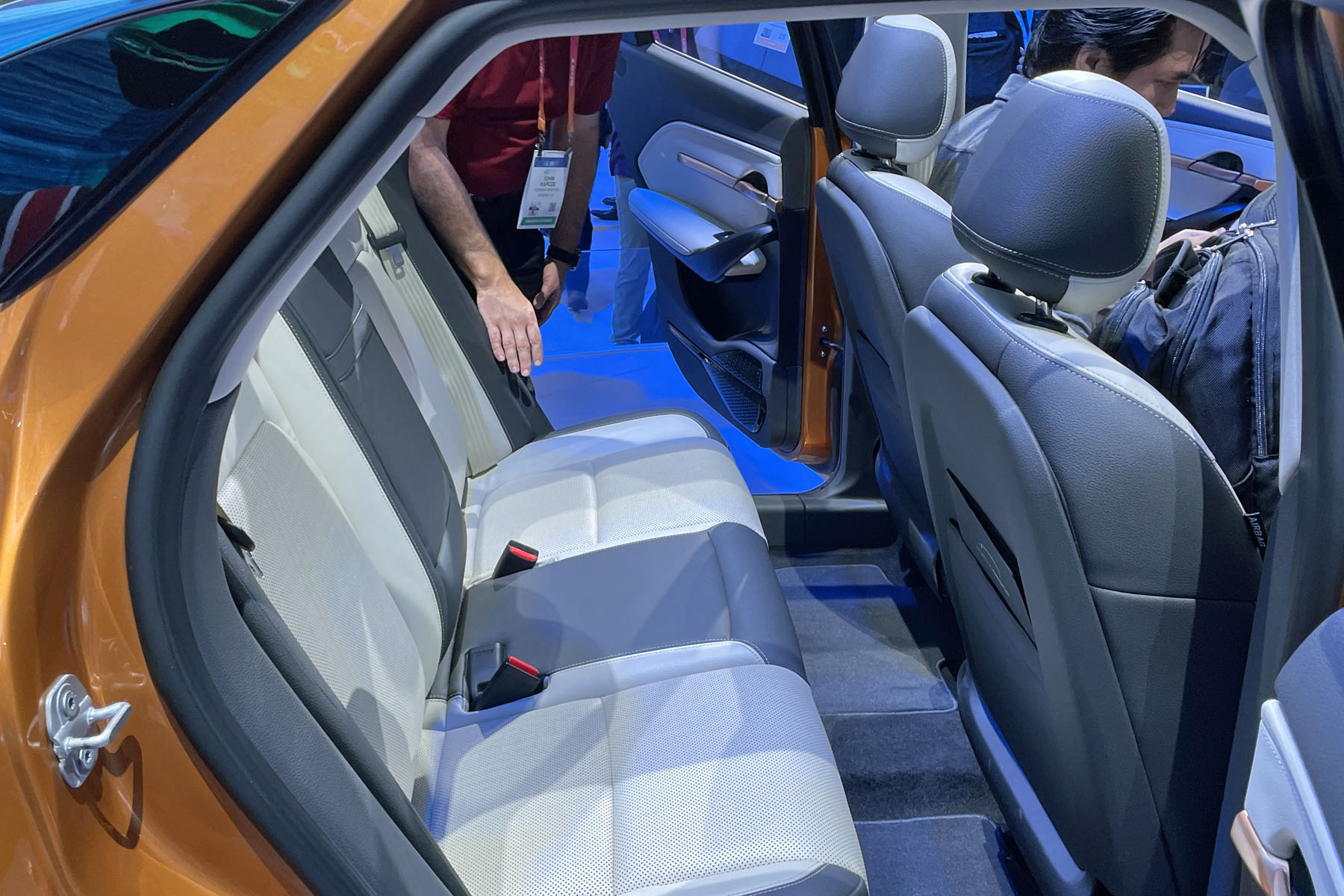
Vinfast VF 6 / Graeme Fletcher, The Charge
Inside, the both new models follow the VF 8’s lead. Rather than having a conventional set of instruments behind the steering wheel, all the information and functionality is housed in a large centrally-mounted screen. In the both VF 6 models and VF 7 Eco it measures a 12.9-inches; the VF 7 Plus earns a 15.0-inch unit. Both also get a full suite of safety aids, including blind spot monitoring, highway drive assist, lane keep assist and adaptive cruise control.
Read more: Here’s why VinFast leasing its batteries is a good idea
Finally, VinFast is transitioning from revealing cars to putting them on the road. To kick things off, 999 VF 8s arrived in Oakland, California at the end last year. Canada’s first VF 8 allotment is due in April. The VF 9 will join the lineup later this year. The VF 6 and VF 7 have both been confirmed for Canada and will arrive late this year or early 2024. Pricing to come.
Volkswagen ID.7
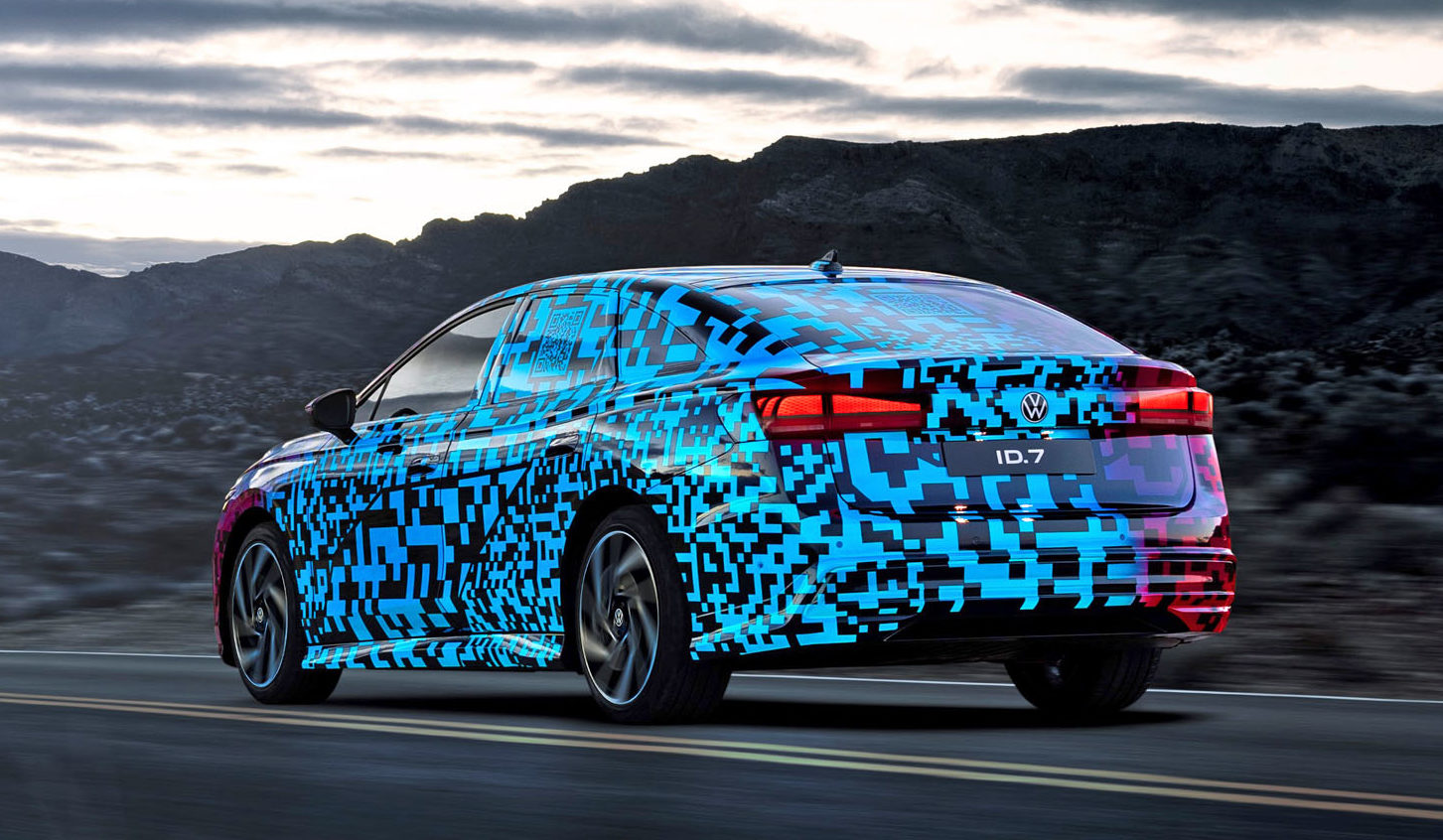
Volkswagen ID.7
Volkswagen pulled the wraps off the next of its ID. models, the 7. It’s big, bold and covered in camouflage, but not just any camouflage! It’s smart camouflage. The system uses a neat technology with no few than 40 layers paint to create a wild effect that hides the stylistic nuances of the ID.7. That said, it sure resembles the Audi A7.
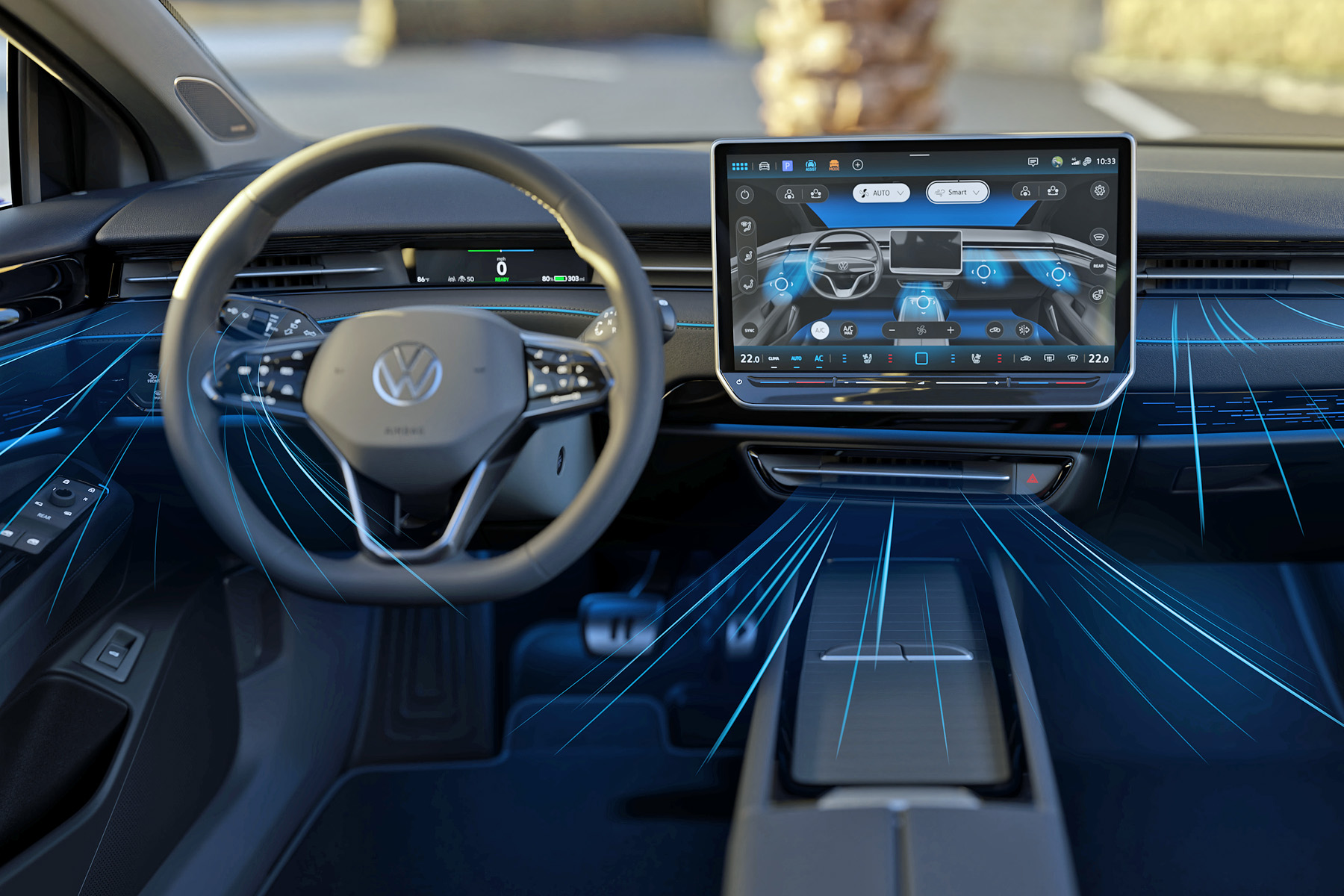
Volkswagen ID.7
The ID.7 rides on VW’s latest MEB platform and a long 2,970-millimetre wheelbase. Inside, it hosts a new 15-inch multimedia screen that works with “Hey Volkswagen.” Say, “Hey VW, my hands are cold,” and on comes the heated steering wheel.
Read more: VW unveils the upscale ID.7 sedan
It also features a head-up display with augmented reality and a new smart air conditioning system. When the ID.7 detects the driver approaching (through the key fob), it starts to heat or cool the cabin. The speed with which the cabin is brought to the desired temperature is helped by the new smart vents. They are designed to distribute the air over large areas quickly.
Industrial applications
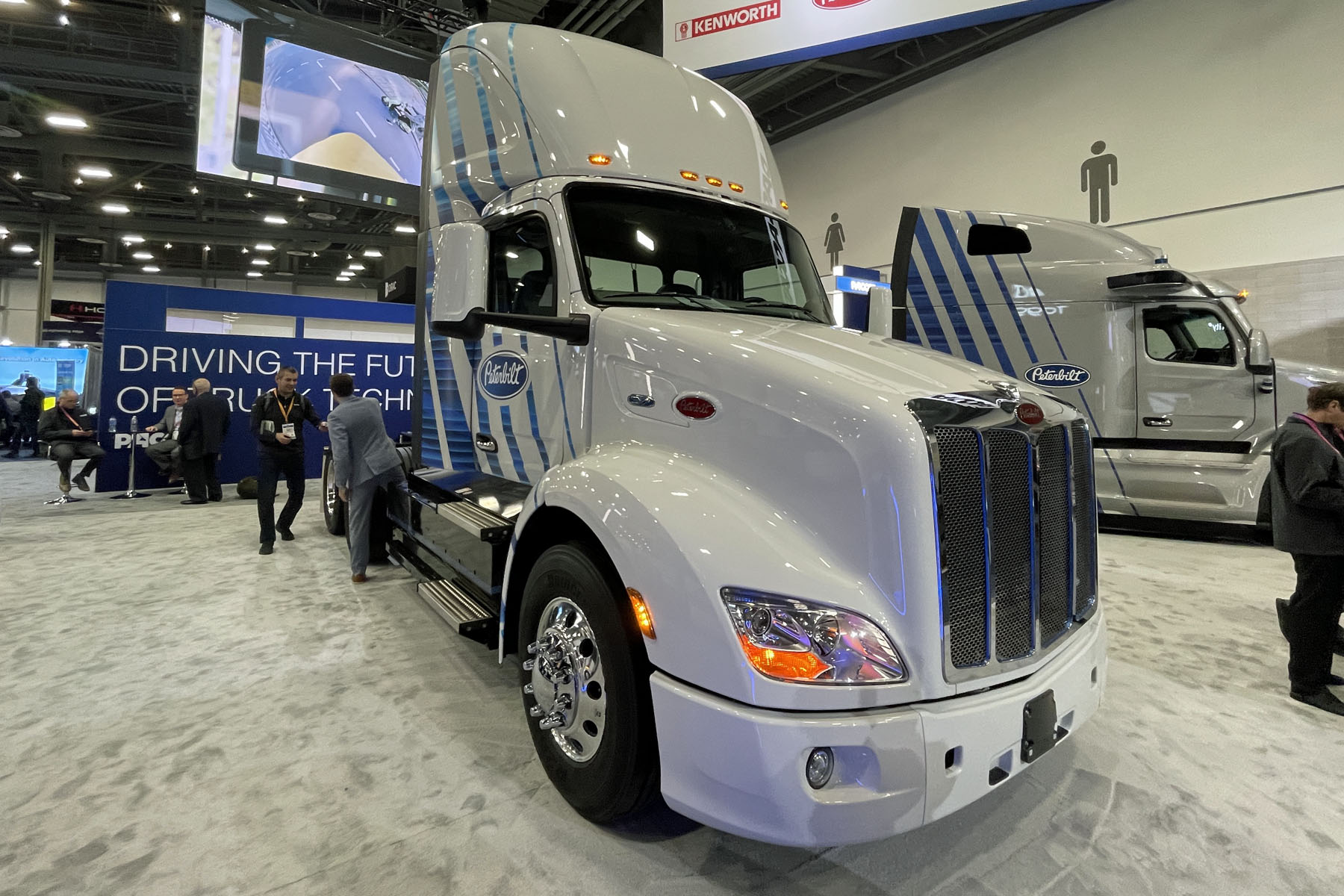
Peterbilt EV / Graeme Fletcher, The Charge
Aside from the vehicle launches, the push towards a sustainable future was to be found in non-traditional areas. Two gentle giants were sitting side by side. The first was a fully-electric Peterbilt semi with a monster 396-kWh battery that delivers 240 kilometres of driving range. Now before you start giggling at the range, that’s when it is maxed out and hauling 17,275 kilograms!
The Kenworth sitting alongside used a fuel cell. When the 60-kg hydrogen tanks are full it delivers a driving range of 770 km when pulling the same load. Yes, that’s well shy of the distance needed by long-distance trucker, but more than enough for shunting stuff around in an inner-city environment. And a hydrogen vehicle can be fuelled in about the same time as diesel – if you can find a station, that is.

John Deere Digger at the 2023 CES / Graeme Fletcher, The Charge
Another overlooked area is in the lowly digger. John Deere was showing a concept with two 63 kWh batteries and motors in place of the usual diesel engine. This would give it an eight-hour workday with one charge — the two batteries can be juiced from 10 to 80 per cent in a little over the typical lunch hour.
Looking ahead, the company wants to do a limited production run of 20 clean diggers and have them in the field by 2026. Some will use an alternate fuel, some will be hybrid and some will battery electric. The latter has a distinct advantage over the traditional digger — sitting in the cab the diesel engine sounded loud and monotonous; the electric unit made a discrete hum. I’d take eight hours of hush over a near-deafening din any day! One important decision was to keep the clean digger exactly the same as its tradition counterpart in terms of the controls and operating characteristics. This was done to avoid a lot of unnecessary operator retraining.
Worst in show!
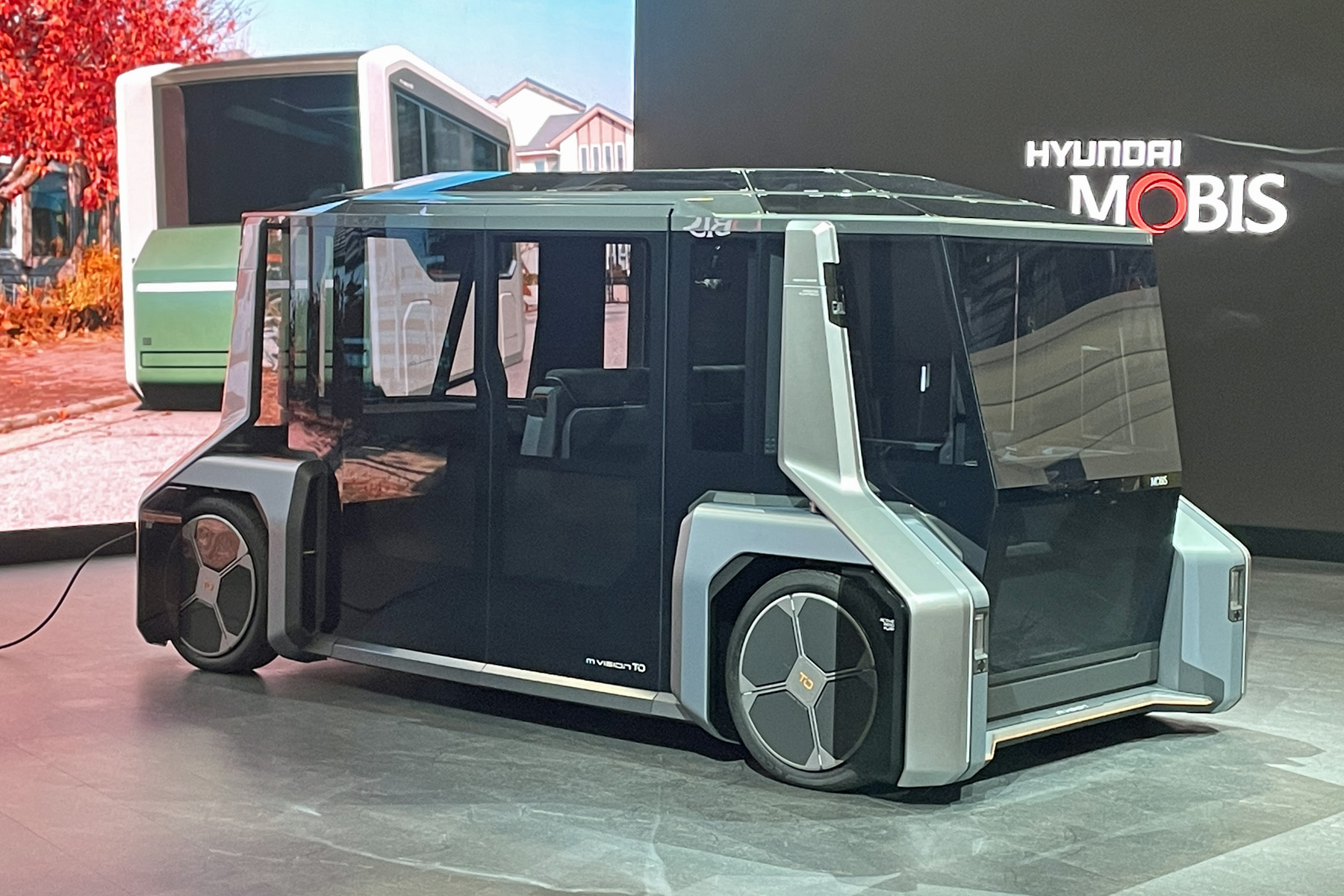
Hyundai Mobis M.Vision TO / Graeme Fletcher, The Charge
Finally, what would any extravaganza like CES be without a dog or two? While there were some seriously ugly vehicles on display — the Hyundai Mobis M.Vision TO and Italdesign’s Climb-E Urban Mobility concept being prime examples. Both give new meaning to toaster-on-wheels. It was a tough choice, but the winner of the Worst of Show goes to the Climb-E.
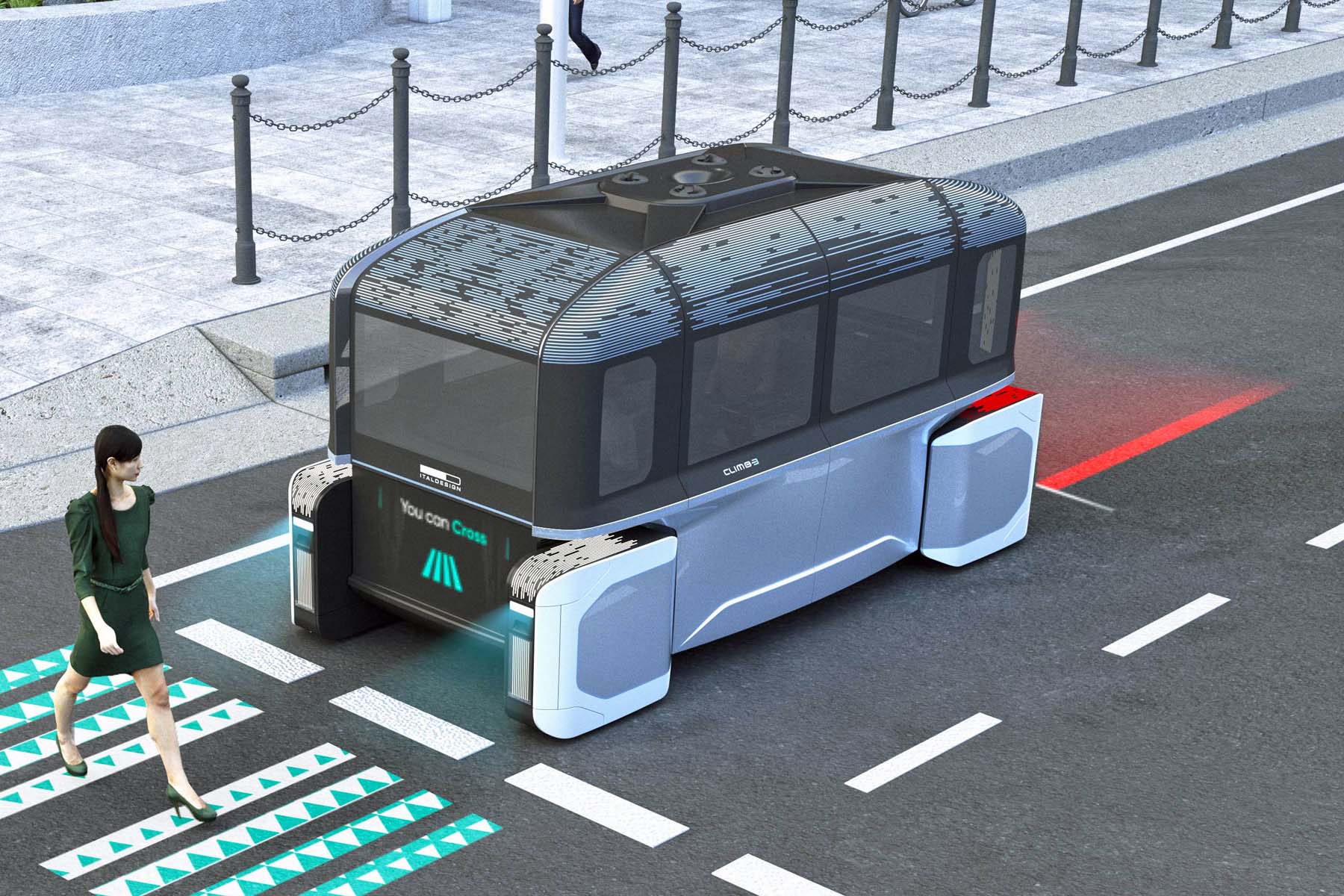
Italdesign CLIMB-E
After all, this atrocity comes from the company that penned the 1971 Maserati Bora, original VW Golf Mk 1 and 1978 BMW M1 to name a few. Worse, however, was the description used to explain its role. According to Italdesign the Climb-E is, “a complete project that foresees a possible future urban scenario directly linked to evolution in the concept of local sustainable urban mobility into continuous sustainable urban mobility.” You simply cannot beat that for baffle-gab at its absolute best!
